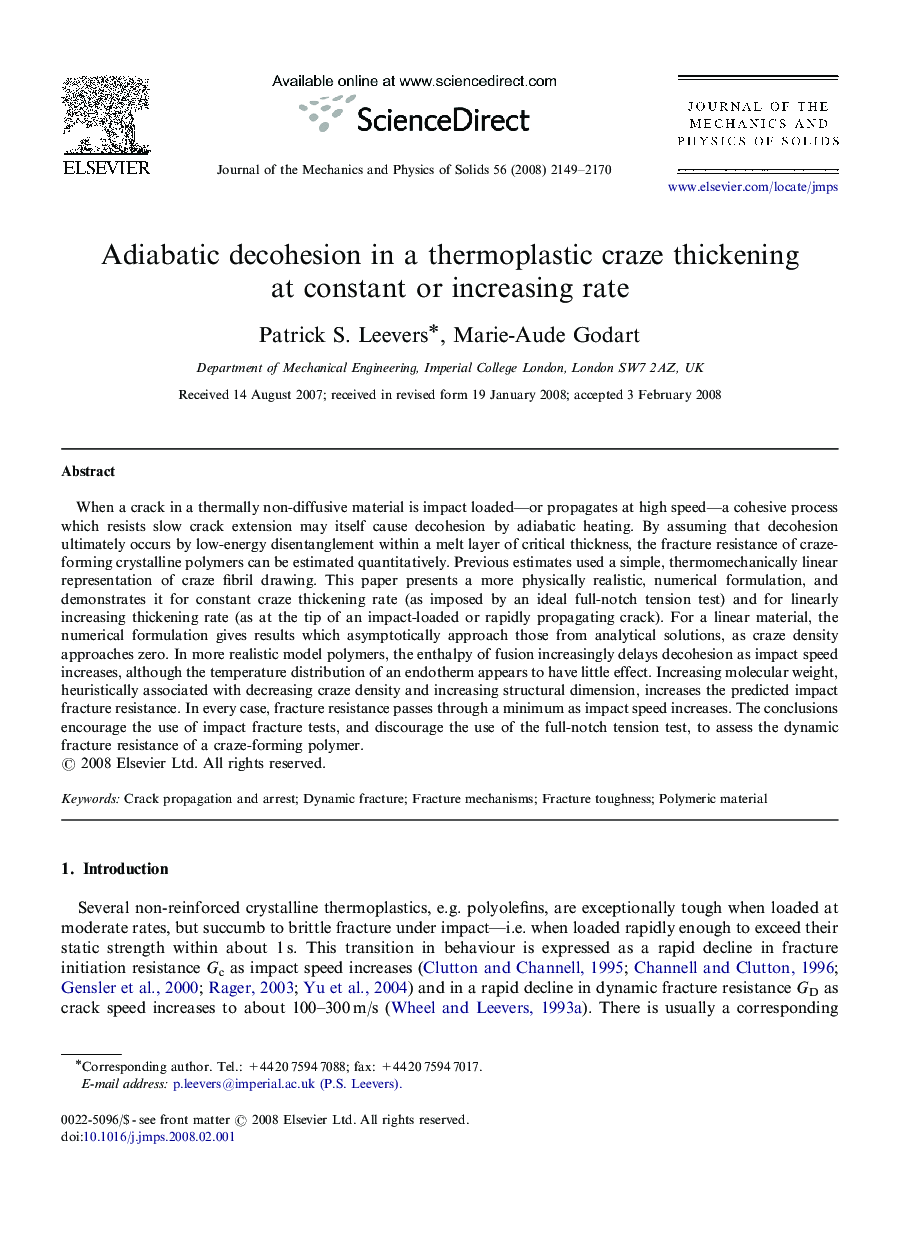| Article ID | Journal | Published Year | Pages | File Type |
|---|---|---|---|---|
| 797429 | Journal of the Mechanics and Physics of Solids | 2008 | 22 Pages |
When a crack in a thermally non-diffusive material is impact loaded—or propagates at high speed—a cohesive process which resists slow crack extension may itself cause decohesion by adiabatic heating. By assuming that decohesion ultimately occurs by low-energy disentanglement within a melt layer of critical thickness, the fracture resistance of craze-forming crystalline polymers can be estimated quantitatively. Previous estimates used a simple, thermomechanically linear representation of craze fibril drawing. This paper presents a more physically realistic, numerical formulation, and demonstrates it for constant craze thickening rate (as imposed by an ideal full-notch tension test) and for linearly increasing thickening rate (as at the tip of an impact-loaded or rapidly propagating crack). For a linear material, the numerical formulation gives results which asymptotically approach those from analytical solutions, as craze density approaches zero. In more realistic model polymers, the enthalpy of fusion increasingly delays decohesion as impact speed increases, although the temperature distribution of an endotherm appears to have little effect. Increasing molecular weight, heuristically associated with decreasing craze density and increasing structural dimension, increases the predicted impact fracture resistance. In every case, fracture resistance passes through a minimum as impact speed increases. The conclusions encourage the use of impact fracture tests, and discourage the use of the full-notch tension test, to assess the dynamic fracture resistance of a craze-forming polymer.
